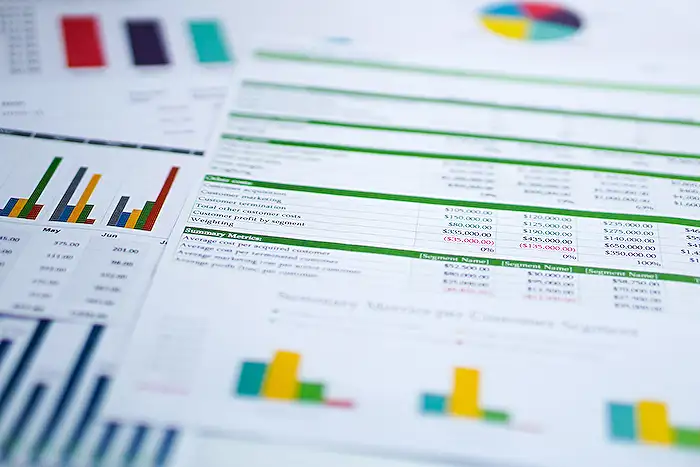
Excel
Mar 5, 2025 9:25 PM
Excel: Dynamic Reports & Dashboards with Essential Functions!
by HubSite 365 about Mynda Treacy (MyOnlineTrainingHub) [MVP]
Excel functions automate updates with dynamic references. Key themes: efficiency, automation. Products: Excel, Office 365.
Key insights
- Excel Tables: Automatically include new data in charts and formulas by adding a new row. However, they don't support dynamic array formulas that spill and require whole column references.
- Dynamic References: Excel functions can return references that adjust automatically as data changes, eliminating manual updates and reducing errors.
- XLOOKUP: Used for dynamic data retrieval with the syntax =XLOOKUP(Lookup_value, Lookup_array, Return_array, "Not Found").
- FILTER Function: Available in Office 365/Excel 2021 and later, it dynamically filters data based on specified criteria using =FILTER(Range, CriteriaRange=Criteria).
- SORT/SORTBY Functions: Dynamically sort data with =SORT(Range, Sort_Index, Sort_Order) or =SORTBY(Range, Column1, Order1).
- UNIQUE Function: Extracts unique values from a range dynamically with the formula =UNIQUE(Range).
Introduction to Dynamic Excel Functions
In a recent YouTube video, Mynda Treacy, a Microsoft Excel MVP and the face behind MyOnlineTrainingHub, delves into the world of dynamic Excel functions. These functions are essential for anyone looking to create reports and dashboards that automatically update with new data. The video is a treasure trove of information for Excel enthusiasts, particularly those who want to streamline their data management processes. Imagine you've crafted a detailed Excel report, only to find that adding new data requires manual updates to charts and formulas. This is a common issue, but it doesn't have to be. Mynda Treacy demonstrates how Excel can automatically adjust charts and formulas, saving time and reducing errors. This article will explore the key points from her video and provide insights into the functions she discusses.The Limitations of Excel Tables
Excel Tables are a popular choice for organizing data, as they automatically expand to include new rows. This feature ensures that charts and formulas update with the latest data entries. However, Mynda Treacy points out some limitations of using Excel Tables. While they are effective for many tasks, they do not work well with dynamic array formulas that spill. Additionally, their structured references apply only to entire columns, which can be problematic if you need to reference specific cell ranges. These limitations highlight the need for more flexible solutions. This is where Excel's functions that return dynamic references come into play. By using these functions, users can create spreadsheets that update themselves, eliminating the need for manual adjustments and reducing the risk of errors.Essential Dynamic Functions
Mynda Treacy introduces several key Excel functions that help automate updates in reports and dashboards. These functions are designed to return dynamic references, making them invaluable for anyone dealing with frequently changing data.- XLOOKUP: This function is used for dynamic data retrieval. It allows users to search for a specific value in a range and return a corresponding value from another range.
- FILTER: Available in Office 365 and Excel 2021, this function dynamically filters data based on specified criteria, making it easier to work with large datasets.
- SORT / SORTBY: These functions dynamically sort data, with SORTBY allowing for sorting based on multiple columns and orders.
- UNIQUE: This function extracts unique values from a range, helping to eliminate duplicates and streamline data analysis.
- SEQUENCE: It generates sequential lists or arrays dynamically, which is useful for creating ordered data sets.
- OFFSET: A function from older Excel versions, OFFSET adjusts range references dynamically, allowing for more flexible data management.
- INDIRECT: This function dynamically references cells, sheets, or ranges, providing greater control over data referencing.
- IF / IFERROR / IFNA: These functions handle errors and apply dynamic conditional logic, ensuring that formulas return meaningful results even when errors occur.
- SUMIFS / COUNTIFS / AVERAGEIFS: These functions summarize data based on multiple conditions, offering a powerful way to analyze complex datasets.
- CHOOSE: This function dynamically selects between different outputs, providing flexibility in data presentation.
Balancing Flexibility and Complexity
While dynamic functions offer significant advantages, they also introduce a level of complexity that can be challenging for some users. Balancing the flexibility of these functions with the ease of use is crucial. Mynda Treacy emphasizes the importance of mastering these functions to fully leverage their capabilities. However, users must also consider the learning curve associated with implementing them effectively. For instance, while the FILTER function is powerful, it requires a solid understanding of criteria-based filtering. Similarly, the INDIRECT function offers dynamic referencing but can be confusing if not used correctly. Therefore, users should approach these functions with a willingness to learn and experiment, gradually integrating them into their workflows.Conclusion: Embracing Dynamic Excel Functions
In conclusion, Mynda Treacy's video provides valuable insights into the world of dynamic Excel functions. By embracing these functions, users can create reports and dashboards that automatically update, reducing the need for manual adjustments and minimizing errors. While there are challenges associated with mastering these functions, the benefits they offer make them a worthwhile investment for anyone serious about data management. As Excel continues to evolve, staying updated with the latest functions and techniques is essential. Mynda Treacy's expertise and clear explanations make her video an excellent resource for anyone looking to enhance their Excel skills. By incorporating these dynamic functions into their workflows, users can achieve greater efficiency and accuracy in their data analysis tasks.

Keywords
Excel Functions, Dynamic Reports, Dashboards, Excel File Included, Data Analysis, Spreadsheet Tools, Business Intelligence, Excel Automation
HubSite 365 Apps